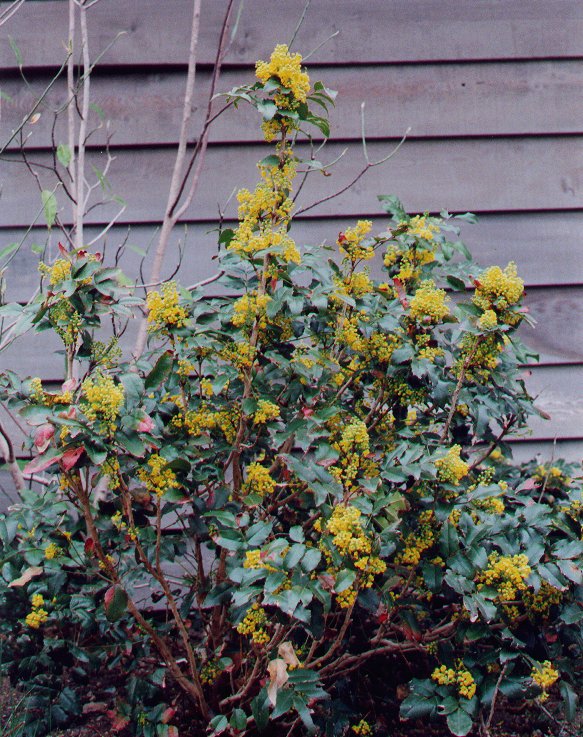Mahonia aquifolium (Pursh) Nutt.
Hollyleaved Barberry

Native
CC = n/a
CW =
MOC = 0
© DETenaglia
Mahonia aquifolium (Pursh) Nutt.Hollyleaved Barberry | |
 |
Native CC = n/a CW = MOC = 0 |
© DETenaglia |
|
Family - Berberidaceae Stems - To -1.5m tall, woody, multiple from base, erect to prostrate, few branched, stoloniferous. Leaves - Alternate, odd pinnate, evergreen. Leaflets typically 3-9, sessile, lance-ovate, serrate(teeth spinose), glabrous, dark green above, dull green to glaucous below, to +7cm long, +4cm broad, acute.
Inflorescence - Axillary and terminal racemes to 15cm long. Pedicels glabrous, elongating in fruit to +/-1.3cm long, subtended by one small bract to 4mm long.
Flowers - Petals 5-10, in 2-4 whorls, yellow, glabrous, 6-8mm long, 5mm broad, emarginate or obtuse. Stamens 6-10. Filaments to 3.5mm long glabrous. Ovary superior, green, glabrous. Stigma capitate. Style wanting. Sepals to 3mm long, 2mm broad, dense pubescent externally, with scarious margins, yellow.
Fruit - Globose to subglobose berry, blue-black, glaucous, to -1cm in diameter.
Flowering - May - July. Habitat - Cultivated. Origin - Native to U.S., cultivated in Missouri. Other info. - This plant is native to the Northwestern U.S. where it grows in shaded forests. In Missouri the plant begins to bloom around May but in other states in can bloom throughout the year depending on the location. The berries are edible and are eaten by wildlife and humans alike. This is the state flower of Oregon. There are a few varieties in cultivation. Besides being eaten as a fruit,Mahonia has been used medicinally for centuries. The plant contains many alkaloids. Recently the plant has shown great promise in the treatment of psoriasis. Stay tuned. Photographs taken at the Kansas City Zoo, 6-02-00. |